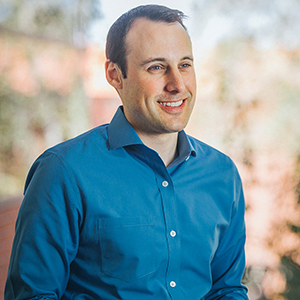Q: Nicole, Darktrace announced last quarter that it had secured over $150 million in Total Contract Value. What's driving enterprise demand for your technology? What specific business issue is your technology helping enterprises address?
Nicole Eagan: With over 2,400 deployments across 64 countries, there's certainly been an unprecedented demand for Darktrace's AI technology and we believe that to be largely a result of the new cyber and business landscape. The breaches of the past year have made one thing clear: we've entered a new era of cyber warfare characterized by silent, stealthy, and advanced cyber-threats. These subtle threats can remain hidden in a network for an average of 146 days before being detected by traditional tools – and at that point, it's already too late.
Further, new attacks that require less human interaction are increasingly being launched, and they can wreak havoc on an entire network in a matter of minutes. Automated threats like these are far easier to detect and stop with automated defenses – machines will be fighting machines on the battleground of corporate networks. The key issue at hand is that threats have become extremely difficult to detect, a challenge compounded by a complex business landscape. The proliferation of non-conventional IT, like IoT devices and cloud and virtual environments, means that organizations are suffering from an underlying lack of visibility. You can't protect what you can't see.
Darktrace's ‘immune system' technology represents the first successful implementation of AI in cyber security. Powered by unsupervised machine learning, it is capable of learning ‘normal' for enterprise networks and identifying subtle deviations in real time, before they can become a crisis. It monitors every user and device across every type of network environment, and it detects and responds to threatening anomalies in real time. And not only does Darktrace's technology spot threats in their nascent stages, it automatically takes precise and proportionate action to neutralize threats, without disrupting normal business operations.
Q: Justin, how can AI and machine learning make security products smarter? What sets your technology apart from others?
Justin Fier: Traditionally, AI has been attempted through rigid programming designed to try and define what ‘bad' is in advance. Up until this point, the technology was supervised, fine-tuned, and trained. It struggled to scale, evolve, and work across every type of business environment, despite the fact that modern networks are incredibly complex entities, containing millions of constantly changing data points, where billions of events take place every day. Darktrace's technology differs in that it uses unsupervised machine learning and AI algorithms to learn the unique ‘pattern of life' for every network, device, and user on a corporate network.
Darktrace's AI detects the slightest, most subtle anomalies in networks of any size – from 12 to 400,000 users – and across every industry vertical. Manual threat hunting has become tedious and unreliable, but unsupervised machine learning has automated the process on a previously unimaginable scale. While humans will always have a vital role to play in cyber security, Darktrace's technology augments security teams with the first proven application of AI for the enterprise.
Our machine learning algorithms require no additional training or configuration. It deploys in less than an hour and immediately starts learning. It instantly provides a visual overview of the entire network, including cloud and SaaS applications and Industrial Control Systems. The technology grows with the network, constantly updating its understanding of normal and learning the most effective actions to take. And most importantly, it's the only technology capable of automatically fighting back against in-progress threats, taking precise, defensive actions to slow or stop threats at the earliest possible stage.
At the end of the day Darktrace helps take the burden off of the analysts allowing them to focus on only the most important threats and work on innovative and proactive projects. We need to be working smarter, not harder.
Q: Nicole, tell us a little bit about Antigena and why you believe technologies like these are critical to enterprise cyber security efforts?
Nicole Eagan: In this threat landscape, we're seeing threats constantly evolve to become faster and more sophisticated. Automated attacks like ransomware spread in a matter of seconds. Employees may jeopardize security with just a few clicks, accidentally or otherwise. It has become impossible for security teams to keep up with the pace of threats amid dynamic enterprise environments.
Darktrace Antigena completes the functionality of the Enterprise Immune System by autonomously and surgically responding to these threats in real time. The technology works like a ‘digital antibody': it intelligently takes defensive action when a threatening anomaly arises. By selecting and executing the most effective response based on the specific context of the threat, its responses are surgical. For instance, Antigena can terminate anomalous connections that are indicative of ransomware without disrupting normal business operations. What makes the technology so powerful is its ability to automatically enforce the ‘pattern of life' for users and devices the moment they start to exhibit signs of threatening behavior.
The actions at Antigena's disposal are vast. When Antigena detects a sufficiently threatening anomaly, it can stop anomalous connections to foreign IPs, prevent devices from communicating with unauthorized users, slow down unusual data transfers, and isolate infected devices and suspicious users. At its core, Antigena's AI technology creates a dynamic boundary for users and devices. When they deviate from normal activity, Antigena is automatically triggered to remediate the situation – taking action that could prove crucial in preventing an anomaly from escalating to a crisis.
Q: Our new DFI engine identifies and prevents malware while it is in a static state - without a signature - before it has a chance to execute a malicious payload. This makes the SentinelOne Endpoint Protection Platform the only solution to combine advanced static prevention with dynamic behavior-based detection within a single platform, regardless of operating system – MacOS or Windows.
Justin Fier: Justin, how will Darktrace use its presence at Black Hat USA 2017 to drive home its product and services messaging? What are you hoping enterprises will learn about your company?
We are excited to be at Blackhat USA this year to educate the market not only on the types of threats we see every day but the different types of machine learning available, and how the immune system approach is fighting back on behalf of enterprises.
Darktrace is the first company in security to successfully build a company around AI and genuine unsupervised machine learning. We look forward to explaining to attendees on the difference between various types of AI, and how to break through the buzz to find technology that can scale, evolve, and truly learn ‘normal' for networks in real-time.
Our technology has been deployed in networks of every size, across every industry, and in many different network designs. To date, it's detected over 30,000 serious cyber-incidents that other tools have consistently missed. We plan on walking through some of the most unique threats we've found: from malicious insiders running underground bitcoin mining operations to infiltrated internet-connected fish tanks.
At the end of the day, the technology speaks for itself. Darktrace's tried-and-tested AI technology will be on full display at Blackhat. Come by our booth (1548) for a demo of our Threat Visualizer, and watch our technology in action as it both detects and responds to emerging threats.











